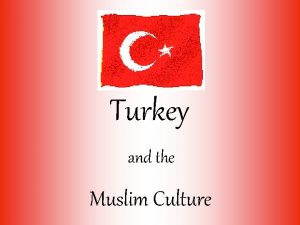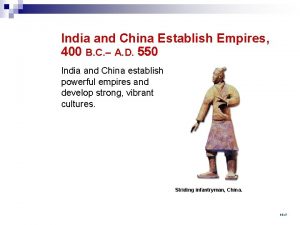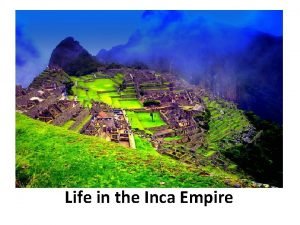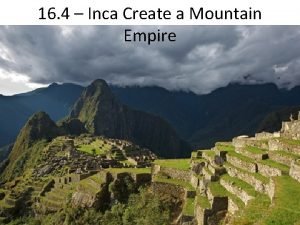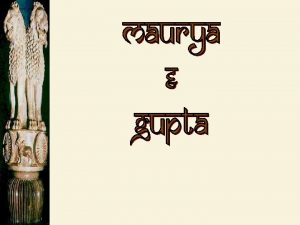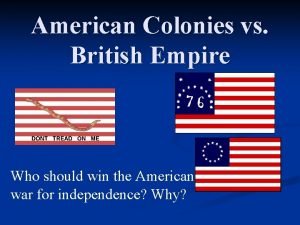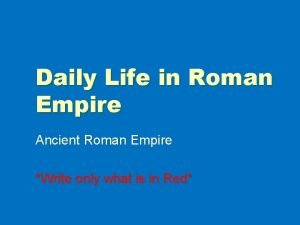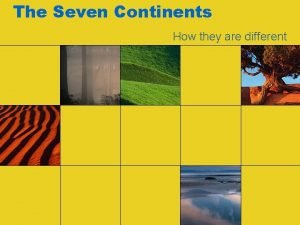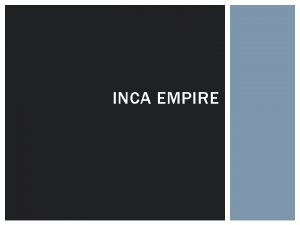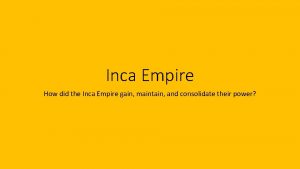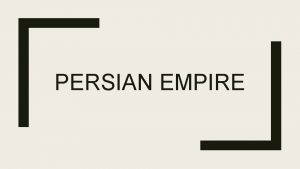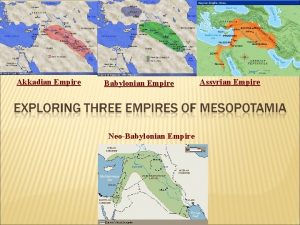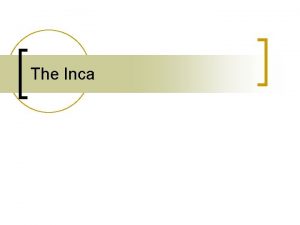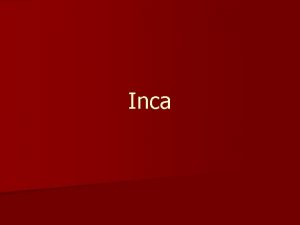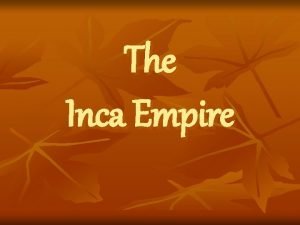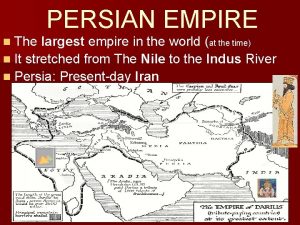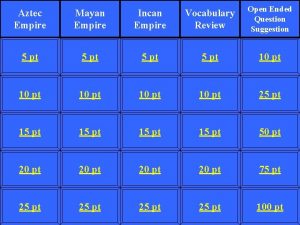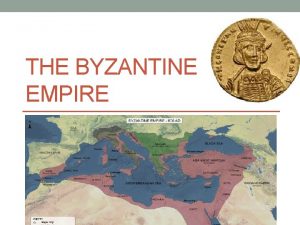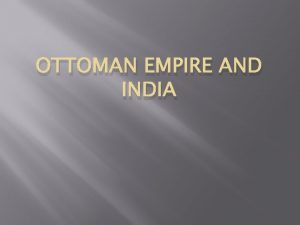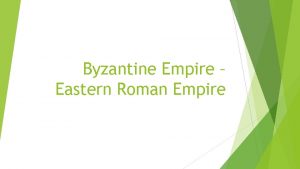The Inca The Inca Empire was the largest

















- Slides: 17

The Inca

• The Inca Empire was the largest empire in pre-Columbian America, and a considerably large empire in the world at its height. The administrative, political and military center of the empire was located in Cuzco. The Inca Empire arose from the highlands of Peru around 1197. From 1438 to 1533, the Incas used conquest and peaceful assimilation to incorporate a large portion of western South America, centered on the Andean mountain ranges, including large parts of modern Ecuador, Peru, Bolivia, Argentina, and Chile.


• The Inca people began as a tribe in the Cuzco area around the 12 th century. Under the leadership of Manco Capac, they formed the small city-state of Cuzco. In 1438 they began a far-reaching expansion under the command of Sapa Inca (paramount leader) Pachacuti, whose name literally meant "world-shaker". During his reign, he and his son brought much of the Andes mountains (roughly modern Peru and Ecuador) under Inca control.

• Pachacuti reorganized the kingdom of Cuzco into an empire, the Tahuantinsuyu, a federalist system which consisted of a central government with the Inca at its head and four provincial governments with strong leaders: Chinchasuyu (NW), Antisuyu (NE), Contisuyu (SW), and Collasuyu (SE). Pachacuti is also thought to have built Machu Picchu, either as a family home or as a summer retreat.


• Pachacuti sent spies to regions he wanted in his empire; they brought reports on the political organization, military might and wealth. He would then send messages to the leaders of these lands extolling the benefits of joining his empire, offering them presents of luxury goods such as high quality textiles, and promising that they would be materially richer as subject rulers of the Inca. Most accepted the rule of the Inca and acquiesced peacefully.

• The ruler’s children would then be brought to Cuzco to be taught about Inca administration systems, then return to rule their native lands. This allowed the Inca to indoctrinate the former ruler's children into the Inca nobility, and, with luck, marry their daughters into families at various corners of the empire.

• The Inca Empire was a patchwork of languages, cultures and peoples. The components of the empire were not all uniformly loyal, nor were the local cultures all fully integrated. The most powerful figure in the empire was the Sapa Inca ('the unique Inca'). Only descendants of the original Inca tribe ever ascended to the level of Inca.

• The Inca used terraces, a sophisticated approach to the problem of farming. The Inca Empire was spread out over several extreme climates, requiring the use of a wide range of agricultural systems. Native Americans were responsible for some of the world’s most prolific crops, including tomatoes, peppers, lima beans, ancient ancestors to modern squash and, most importantly, the potato.


• Maize was also deeply integrated into Inca agriculture and daily life. However, the Inca Empire cultivated a large variety of distinctly Andean crops that were not appreciated or adapted by Pizarro or the Spanish.


• The Inca Empire was quite ecologically diverse. The Empire started in the low coastal valleys along the Pacific Ocean and stretched over the second highest mountain range in the world, the Andes, all the way down into the cloud forests of the Amazon Rainforest. This vast environmental diversity was mainly responsible for the large variety of Inca crops as well as a continuous abundance of food.


• Cooking in the Inca Empire was simple and rather conservative. Because so much of the Empire was in the high mountains and barren costal plains, wood was saved as much as possible. The Inca used several kinds of grain to make bread, and they raised ducks, dogs and guinea pigs as supplemental meat when there was no wild game.

 Largest islamic empire
Largest islamic empire Biggest empire in india
Biggest empire in india Inca empire ap world history
Inca empire ap world history How far did the inca empire stretch
How far did the inca empire stretch The inca create a mountain empire
The inca create a mountain empire Mauryan empire and gupta empire venn diagram
Mauryan empire and gupta empire venn diagram American empire vs british empire
American empire vs british empire Life in the roman empire
Life in the roman empire Largest lake in poland
Largest lake in poland Largest atomic radius
Largest atomic radius What are the regions of canada
What are the regions of canada Largest boat anchor
Largest boat anchor Miami dade county juvenile services department
Miami dade county juvenile services department Largest nerve in the body
Largest nerve in the body Huge collections of stars
Huge collections of stars Largest cal state campus
Largest cal state campus System ya
System ya Largest continent
Largest continent
